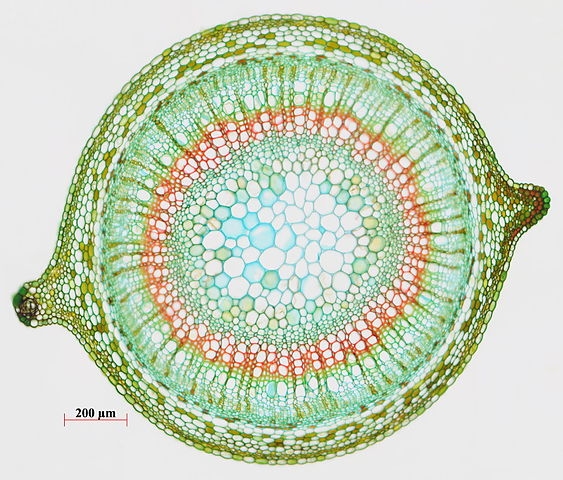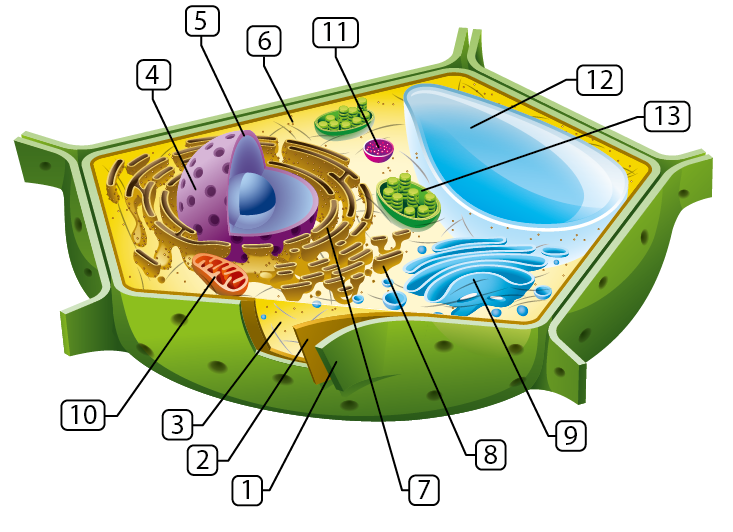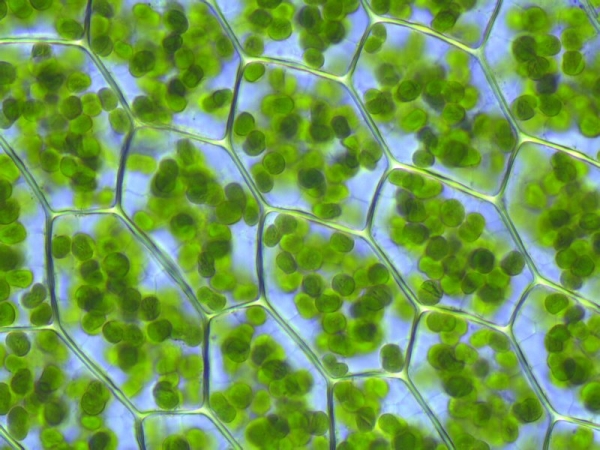what gives shape and support to the Plant cell
Plant Cell Structures and Functions
Tilia stem cross-section (claudio9divizia, iStockphoto)
How does this align with my curriculum?
The prison cell was first discovered in 1665 by an English scientist named Robert Hooke. While looking through a microscope, he observed tiny box-like objects in a slice of cork (bark from an oak tree) and named these boxescells. Cells are the bones units of life, which make upwardly all living things. This idea forms the basis of theCell Theory.
Cell Theory
The iii main parts of the cell theory are:
- All living things are made of cells.
- The cell is the basic unit of measurement of construction and function in all living things.
- Cells simply come from other pre-existing cells byjail cell division.
While some organisms are single-celled, others are made up of many cells. These organisms are chosenmulticellular (having many cells). Cells differ in their size and complexity.
Eukaryotes are organisms which are made up of large and circuitous cells, whereasprokaryotes are organisms which are made up of small and simple cells. Animals and plants are examples of eukaryotes (haveeukaryotic cells) while bacteria are examples of prokaryotes (acceptprokaryotic cells).
Plant Cell Structure and Part
In spite of the differences in size and complexity, all cells are by and large composed of the aforementioned substances and they all comport out like life functions. These include growth and metabolism and reproduction by cell division.
Cells are made up of subcellular structures that are responsible for dissimilar and specific functions. These structures are known asorganelles. A number of these organelles are mutual to both animal and institute cells. This section will focus on those parts which plants have.
Jail cell Structures (Jail cell Organelles)
- Cell Wall:This is the rigid outermost layer of a plant cell. Information technology makes the cell stiff -providing the prison cell with mechanical support - and giving it protection. Animal cells do not take cell walls.
- Jail cell Membrane:This is a protective layer that surrounds every cell and separates it from its external environment. Information technology is found just inside the prison cell wall and is fabricated upwardly of circuitouslipids (fats) andproteins.
- Cytoplasm:The cytoplasm is a thick,aqueous (water-based) solution in which the organelles are found. Substances such equally salts, nutrients, minerals andenzymes (molecules involved in metabolism) are dissolved in the cytoplasm.
- Nucleus:The nucleus is the 'control centre' of the jail cell. It containsDeoxyribonucleic acid (Deoxyribonucleic acid), the genetic material that directs all the activities of the cell. Only eukaryotic cells havenuclei (plural fornucleus), prokaryotic cells do not. The nucleus is separated from the cytoplasm by a specialized membrane called the
- Nuclear membrane.
- Ribosomes:These are footling round structures that produce proteins. They are plant in the cytoplasm or attached to the endoplasmic reticulum.
- Endoplasmic Reticulum (ER):The ER is a membrane system of folded sacs and tunnels. The ER helps move proteins within the cell likewise as export them exterior of the cell. In that location are two types of endoplasmic reticulum.
- Rough endoplasmic reticulum. The crude endoplasmic reticulum is covered with ribosomes.Smooth endoplasmic reticulum (no ribosomes)
- Golgi trunk:The Golgi body is a stack of membrane-covered sacs that prepares proteins for consign from the cell.
- Mitochondrion(plural mitochondria ): This is the 'powerhouse' of the cell. Information technology converts the energy stored in food (sugar and fat) into energy-rich molecules that the cell can apply (Adenosine triphosphate –ATPfor short).
- Lysosome:The lysosome is the digestive middle of a cell that produces many dissimilar types of enzymes which are able to break down food particles and recycle worn out components of the cell.
- Vacuoles:These are big membrane-enclosed compartments that store toxic wastes likewise as useful products such every bit water. These are mainly found in plants.
- Chloroplast:Chloroplasts contain a greenish pigment that traps sunlight and converts it into sugars by a process called photosynthesis. The sugars are a source of energy for the plants and the animals that eat them.
What Makes Establish Cells Unique
- Plant cells have a cell wall.
Institute cells are dissimilar from creature cells in a number of means. Possibly the nearly obvious difference is the presence of a cell wall. The cell wall provides strength and back up to the plant, much similar theexoskeletonof an insect or spider (our skeleton is on the within of our body, rather than on the outside similar insects or spiders).
The plant cell wall is mainly made upward of thecarbohydratesmoleculescellulose andlignin. Cellulose is used extensively by humans for making paper. Cellulose can also be converted intocellulosic ethanol, a type ofbiofuel. Some animals, such as cows, sheep and goats, can assimilate cellulose with the aid of bacteria in their stomachs. Humans cannot assimilate cellulose, which passes through our bodies and is better known as dietary fiber, something that we should eat to go along our waste product moving as it should! Lignin fills in the spaces betwixt cellulose and other molecules in the cell wall. Lignin likewise helps water molecules motion from one side of the prison cell wall to the other – an of import function in plants.
- Plant cells contain vacuoles.
Most adult plant cells have one big vacuole that takes upwards more than thirty% of the cell's volume. At certain times and conditions the vacuole takes upwards as much as 80% of the jail cell's volume! In addition to storing wastes and h2o, the vacuole too helps to support the cell because the liquid inside the vacuole exerts an outwardpressure on the cell, much like the water inside of a h2o balloon. This is chosenturgor pressureand keeps the cells from collapsing inward.
- Establish cells comprise chloroplasts.
Unlike animal cells, plant cells can harness the energy of the Dominicus, store it in the chemical bonds of carbohydrate and subsequently utilize this energy. The organelle which is responsible for this is the chloroplast. Chloroplasts comprisechlorophyll, the greenish pigment that gives leaves their colour and absorbs light energy.Cyanobacteria, a blazon of prokaryote capable of photosynthesis, are considered to be the ancestors of chloroplasts!
Did you know?
Ruddy algae (multicellular marine algae) have chloroplasts that contain the paint phycobilin rather than chlorophyll, which gives them a reddish, rather than greenish, color.
Institute and animal cells besides have many common organelles, including the nucleus, cell membrane (called theplasma membrane in animals) endoplasmic reticulum, mitochondria and cytoplasm, also as several others.
References
Let'southward Talk Science needs your input!
Our programs and resource are offered at no cost cheers to generous contributions from our supporters.
Delight take a minute to tell us the name of your school/organization and so we can better understand the impact of our programs.
Open Survey
Source: https://letstalkscience.ca/educational-resources/backgrounders/plant-cell-structures-and-functions



0 Response to "what gives shape and support to the Plant cell"
Post a Comment